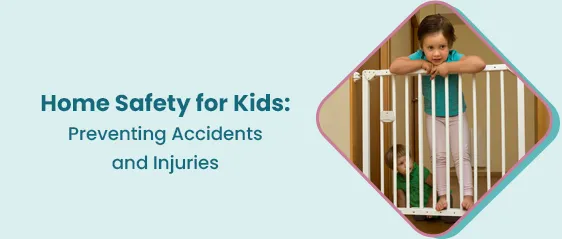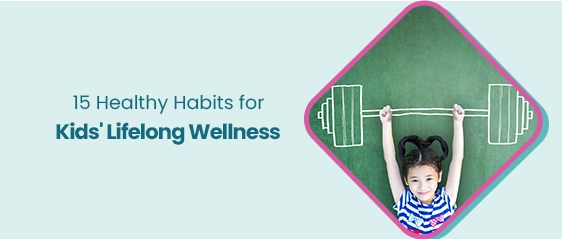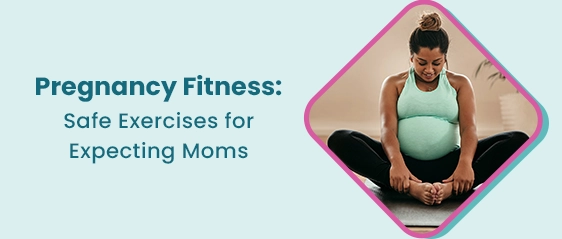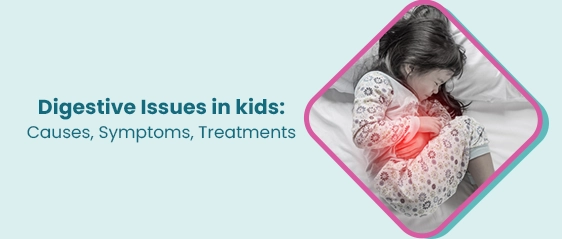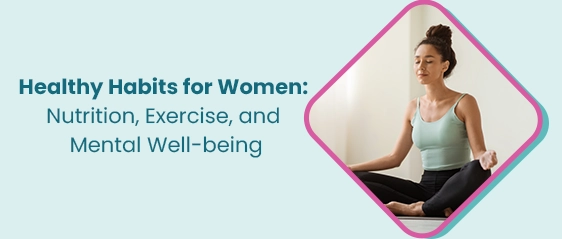Home Safety for Kids: Preventing Accidents and Injuries
- 14 Aug 2023
As parents, caregivers, or protectors, our primary job is keeping kids safe and healthy. Home is where kids spend lots of time, so it should be a safe place to learn, play, and explore. In this blog, we'll learn important things to make your home safe and cosy for kids. This way, we can lower the chances of accidents and ouchies.
Childproofing Your Place
Making your home kid-safe is the first step. Imagine you're a kid and look around to find things that could be risky. Cover up electrical outlets, keep heavy items from tipping over, and use gates to block stairs and no-go zones. Use soft guards on pointy furniture edges, and ensure stuff like cleaning things and medicine is locked away.
Safety in the Kitchen
Kitchens can be busy, but they can also be tricky for kids. Keep sharp things like knives and scissors out of reach, and use unique covers on stove knobs so kids can't turn them on. Put cleaning stuff and chemicals up high or in locked cupboards. When you cook, use the back burners and turn the pot handles away from the edge to stop spills.
Being Careful in the Bathroom
Bathrooms can be slippery and not so safe. Put non-slip mats in the tub and bathroom floor to stop slips. Lock away stuff like medicine, makeup, and soap. Always watch little ones during bath time and ensure the water isn't too hot.
Windows and Blinds Safety
Windows and blinds can be tricky for curious kids. Add special guards or locks to stop windows from opening too wide. Blinds without cords are better to prevent kids from getting tangled. Keep things away from windows to keep kids from climbing.
Fire and Electricity Safety
Teach kids about fire and electricity. Put smoke detectors on every floor of your home and make sure they work. Teach kids the "Stop, Drop, and Roll" trick if their clothes catch fire. Keep matches, lighters, and candles out of reach, and never leave lit candles alone.
Avoiding Poison Problems
Lock up cleaning things, medicine, vitamins, and other things that might be harmful. Please keep them in their original bottles with special lids to stop kids from getting into them. Know the number for Poison Control and what to do if a kid swallows something they shouldn't.
Safe Play with Toys
Check toys often for small parts that kids might swallow, sharp edges, or broken pieces. Use toys that are okay for your kid's age. Avoid toys with strings or cords that could be dangerous. And make sure outside toys are safe and in good shape.
Making Furniture and Things Safe
Ensure heavy stuff like bookshelves and dressers are attached to the wall so they can't tip over. Hide electrical cords and plugs so kids can't mess with them. Unplug things when they're not being used and tuck away cords.
Ready for First Aid
Get a good first aid kit and learn how to use it. Know how to help with minor cuts, bruises, and burns. Keep significant phone numbers like the doctor and Poison Control where you can find them fast.
Teaching Kids to Be Safe
Besides keeping things safe, teach kids about safety rules. Tell them about the dangers of running indoors, playing near streets, or bothering animals they don't know. Show them how to use 911 if there's a big problem and practice what to do in different emergencies.
Conclusion
Your home should be a safe place where kids can grow, play, and learn without worrying about getting hurt. When you're careful about what's around and teach kids about safety, you help make your home the best place for them. It would be best if you always thought about making sure kids are safe, but knowing you're keeping them from getting hurt is worth it. A safe home is a happy home for everyone!
Frequently Asked Questions
1. Why is home safety for kids important?
Ensuring home safety for kids is crucial because children are naturally curious and unaware of potential hazards. A safe home environment reduces the risk of accidents, injuries, and emergencies, allowing children to thrive without unnecessary risks.
2. How do I start making my home kid-safe?
Begin by looking at your home from a child's perspective. Identify potential risks such as sharp edges, unlocked cabinets, and accessible electrical outlets. Implement safety gates, use corner protectors, and secure heavy furniture to create a child-friendly space.
3. What are some kitchen safety tips for kids?
Keep sharp objects out of reach, use stove knob covers to prevent accidental burns, and store cleaning products in locked cabinets. Ensure that pot handles are turned away from the stove's edge to avoid spills.
4. How can I ensure bathroom safety for children?
Place non-slip mats in the bathtub and bathroom floor to prevent falls—store medicines, cosmetics, and cleaning products out of reach. Always supervise children during bath time and adjust the water temperature to avoid scalding.
5. How can I childproof my home against poisoning risks?
Lock away cleaning supplies, medications, and toxic substances in secure cabinets—store items in their original containers with childproof lids. Keep the Poison Control Center number handy and know what to do in case of ingestion.
6. What should I consider regarding toy safety?
Regularly inspect toys for small parts that could be swallowed, sharp edges, or broken components. Choose age-appropriate toys, avoid toys with cords that pose strangulation hazards, and ensure well-maintained outdoor play equipment.
7. How can I teach kids about safety rules?
Educate children about running indoors, playing near roads, and interacting with unfamiliar animals. Teach them how to use 911 during emergencies and practice different safety scenarios.
8. Why is having a first aid kit important?
A well-stocked first aid kit is essential for promptly addressing minor cuts, bruises, and burns. Knowing basic first aid techniques and having essential contact numbers, such as those of doctors and Poison Control, readily available can make a significant difference in times of need.
9. How does prioritizing home safety contribute to a happy home?
A secure home environment fosters a sense of well-being, allowing children to grow, explore, and learn without unnecessary worry. Parents and caregivers contribute to a harmonious and joyful household where children can thrive by creating a safe haven and instilling safety awareness.
